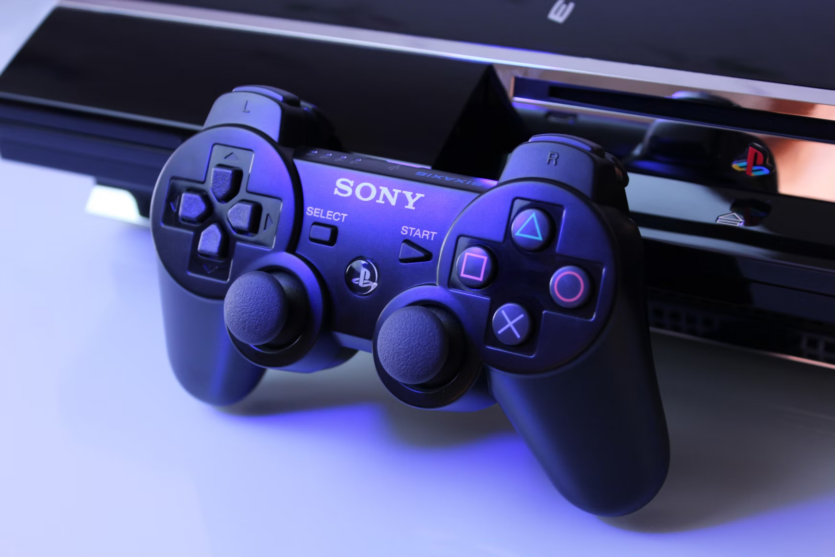
The Sony PlayStation 3 game console was so eagerly awaited that people literally fought in lines for it at its release and rushed home to try out the new generation of gaming. And it was not in vain because the PS3 became a real technological phenomenon of the time. It was not just another game console, but the most productive home computer of the time — no x86 CPU could match the incredible POWER processor of the Sony PlayStation 3.
Content
A new era of video games
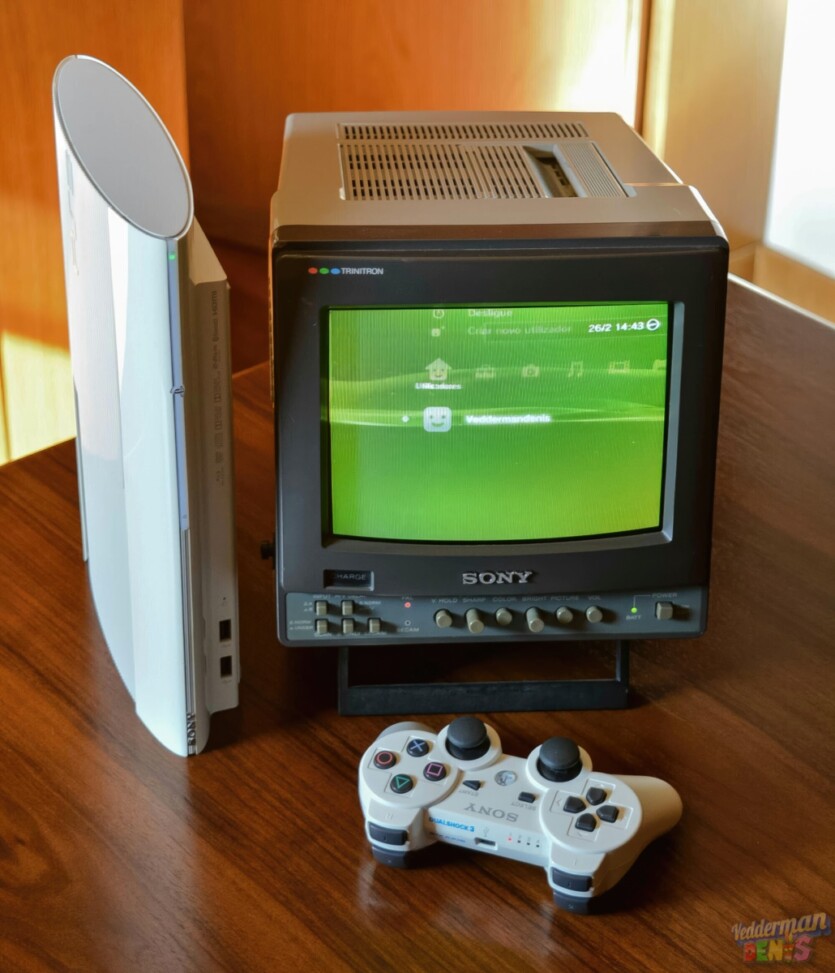

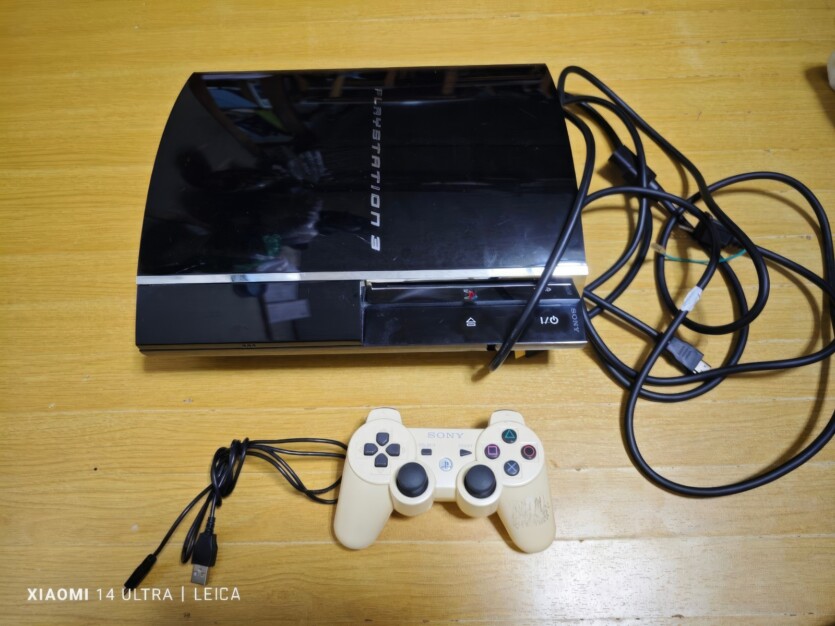
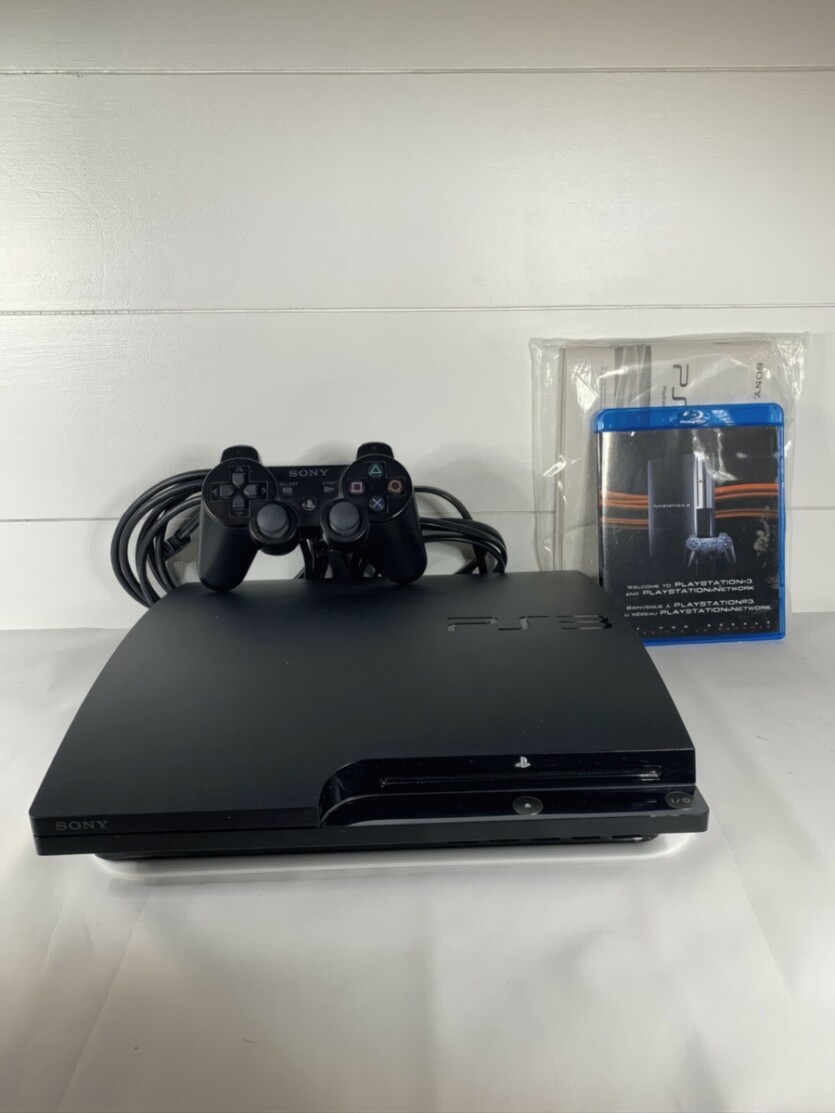


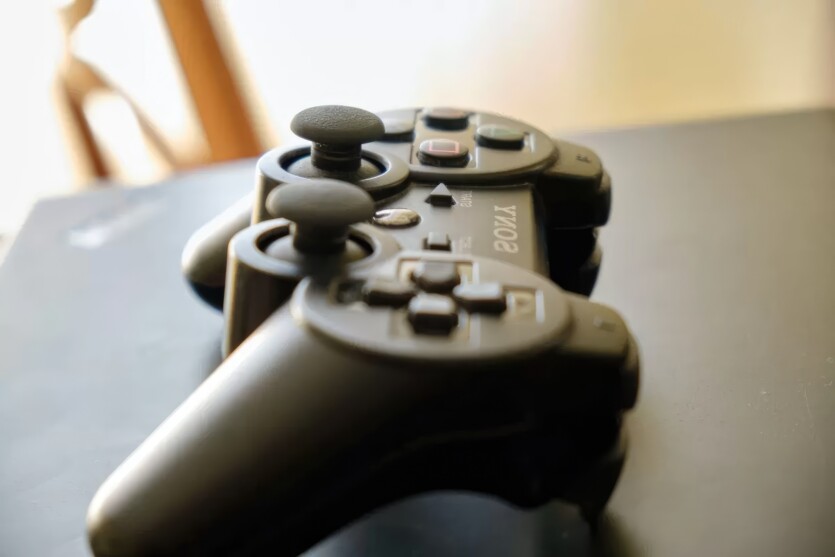
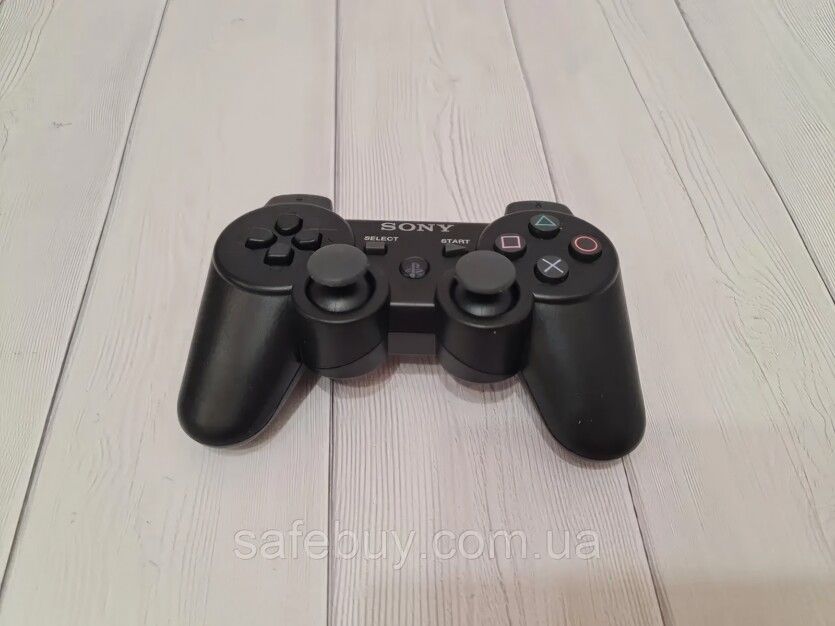
The PlayStation 3 has become a key milestone in the history of video games, known for its cutting-edge content, multimedia capabilities, superior peripherals, and high-quality exclusive games that only come to PC through 14 years old after the release.
The console was released back in 2006 and became part of the seventh generation of game consoles. It was Sony’s worthy response to Microsoft’s Xbox 360 (which was already successfully selling) and Nintendo’s Wii. While Nintendo went the other way (casual games for children and families), Xbox was a strong competitor, especially in the US, but today’s story is not about the American console.
The PS3 first introduced the concept of «HD gaming» and Blu-ray discs, and also made it possible to play online through the PlayStation Network (PSN), where users could access PvP, PvE, download digital content and use streaming services. It was the beginning of the golden era of online video games and wireless peripherals.
A huge success Sony PlayStation 2 provided a good motivation for the company to make the new generation of consoles even better. Although it was not possible to repeat the number of PS2 sales, the PS3 turned out to be no less amazing than its predecessor in terms of technology. At the time of its release, the most powerful PCs of the time for several thousand US dollars were insignificant and weak against this «miracle of technology».
Amazing processor on the endangered POWER architecture


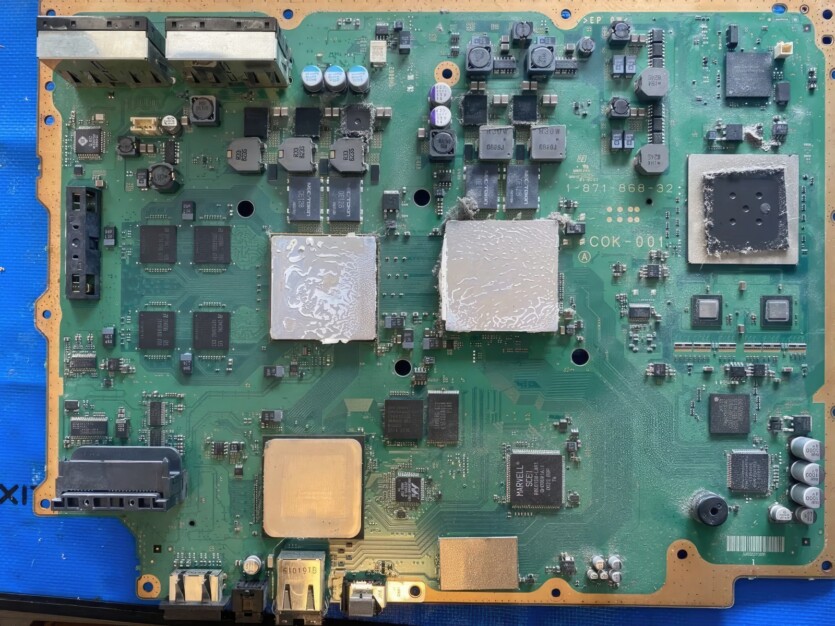
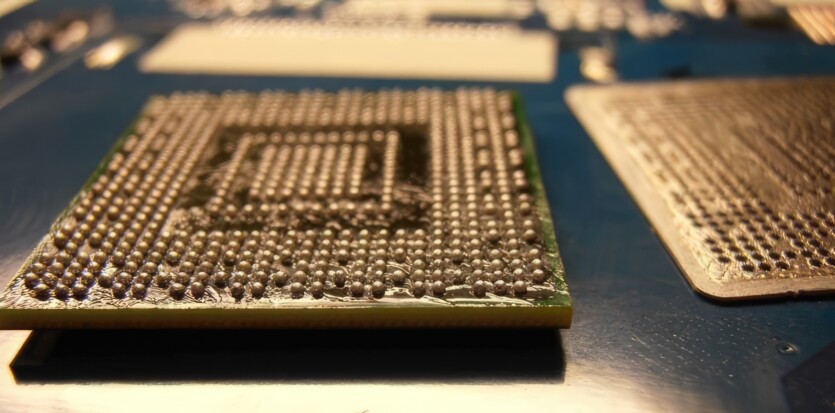
The Cell processor, developed together with IBM and Toshiba, provided the PS3 with a unique multi-core architecture that seemed incredible at the time. It allowed for the processing of complex graphics and physics that PCs could only dream of.
Although its unconventional «design» created difficulties for game developers, the console later offered iconic titles such as Uncharted, The Last of Us, and God of War III, which fully unlocked the potential of the PS3’s phenomenal hardware. What is so amazing about it?
Cell BE includes one main Power Processing Element (PPE) processor per 3.2 GHz і eight auxiliary processors — Synergistic Processing Elements. SPEs work autonomously to handle specific tasks, such as physical effects or graphics processing, making the console effective for parallel processing.
This architecture was something strange for fans of backward PCs at the time, but it brought only solid advantages. Despite the extinction of POWER on the desktop market, this architecture went down in history thanks to the PlayStation 3. It was definitely the best processor at the time, and no flagship Intel or AMD processor could match it.
The PS3 allows you to run multiple processes simultaneously thanks to its architecture focused on distribution computing tasks. This ensured high performance in AAA games, complex physics simulations, and realistic animation, which was difficult to achieve with the CPUs of previous generations of consoles.
This unleashed the hands of talented developers and gave them incredibly high-quality mechanics, realistic physics, etc. It is worth mentioning GTA IV, which was released in 2008 — it was a real breakthrough and while owners of cool PCs were playing 10-20 FPS with crazy freezes of half a second, the owner of a PS3 had a stable video sequence.
SPE elements can process tasks independently of each other, which allows game developers to distribute load between threads. This reduced the workload of the main PPE and ensured stable operation in games. For example, one SPE could be engaged in physical computing, and another in sound processing, etc.
It was the PS3 that laid the foundations for parallel data processing and is capable of playing video games that were quite slow on gaming PCs of 2006-2009. It was this console that moved progress forward, showed the right direction of development, and forced computer hardware developers to move forward, develop multi-core CPUs, and software developers to write code to utilize multiple threads.
On the other hand, the unusual structure of Cell BE made development for PS3 more difficult (higher entry threshold) compared to previous consoles. Game developers had to adapt the code to work with parallel processing, which required additional costs and staff training. This was the reason some early games on PS3 could not fully realize the capabilities of Cell BE (yes, there are also unoptimized games on consoles).
Graphics accelerator and optimization
The PlayStation 3 used the RSX (Reality Synthesizer) GPU, which was specially developed for the console by NVIDIA in cooperation with Sony. The chip was based on NVIDIA’s graphics architectures and had a number of features that set it apart from other GPUs of the time.
The RSX was based on an architecture similar to the GeForce 7800, but was adapted to the specific needs of the PS3. It received a clock speed of 550 MHz and 256 MB of GDDR3 video memory with a bandwidth of 22.4 GB/s. The main difference is optimization, because where the desktop GeForce 7800 produced slide shows, PS3 games «flew».
Why? The RSX interfaced with the PS3’s Cell processor so that graphics processing tasks could be partially offloaded to the Cell’s SPE cores, which helped with computational tasks such as physics and animation effects.
This is where the jokes about the poor optimization of video games on PCs came from. The perfect symbiosis of PS3 components allowed them to be used to their fullest, while a similar computer would have «bottleneck». By the way, some PC games, such as Mortal Kombat, allow you to switch the load from the GPU to the CPU when processing particles in the settings, but this is extremely rare.
Freezes, poor image, and 20 FPS on PC:
Thanks to powerful shaders and texture blocks, RSX provided high-quality lighting, shadows, and textures, which allowed us to achieve a level of graphics close to modern HD standards, which were new at the time. Of course, in 2024, the picture quality is mediocre, but still not bad, especially if you play on a TV 2-3 meters away from the couch.
Smooth gameplay, great picture on PS3:
The GPU supported up to 1080p output resolution, which was important not only for gaming (not many games run at that resolution), but also for watching movies. Thanks to the integration with Cell, the RSX could also use up to 256 MB of PS3 system RAM (XDR RAM) as an additional buffer, which allowed the GPU to expand its capabilities in AAA games.
The RSX supported modern graphics standards of the time, such as OpenGL ES and partially DirectX 9.0, which allowed for the implementation of complex graphic effects. This contributed to the emergence of games such as Uncharted, God of War III, and The Last of Us on the PS3, which demonstrated an amazing level of detail and realism.
A game that utilized all the features of the PS3:
Towards the end of the PS3’s life cycle, the games were gorgeous — it’s hard to believe that the console’s hardware is capable of this because for an identical gaming experience, you need a computer that is many times more productive and much pricier.
«Blue Ray» and the master of multimedia
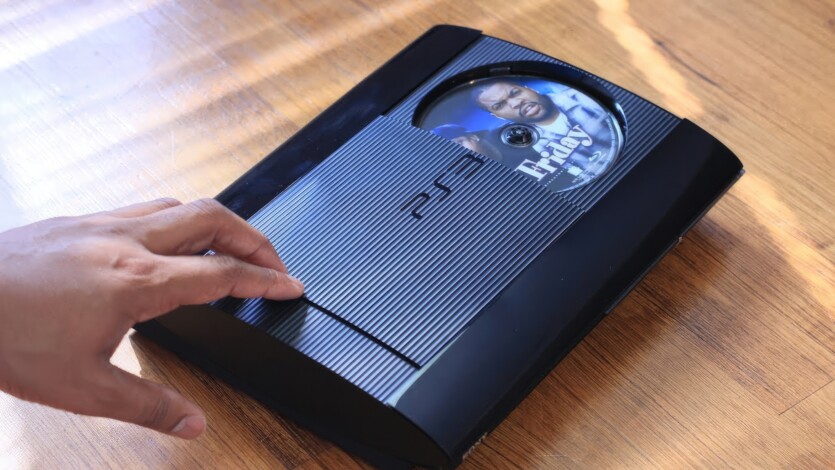
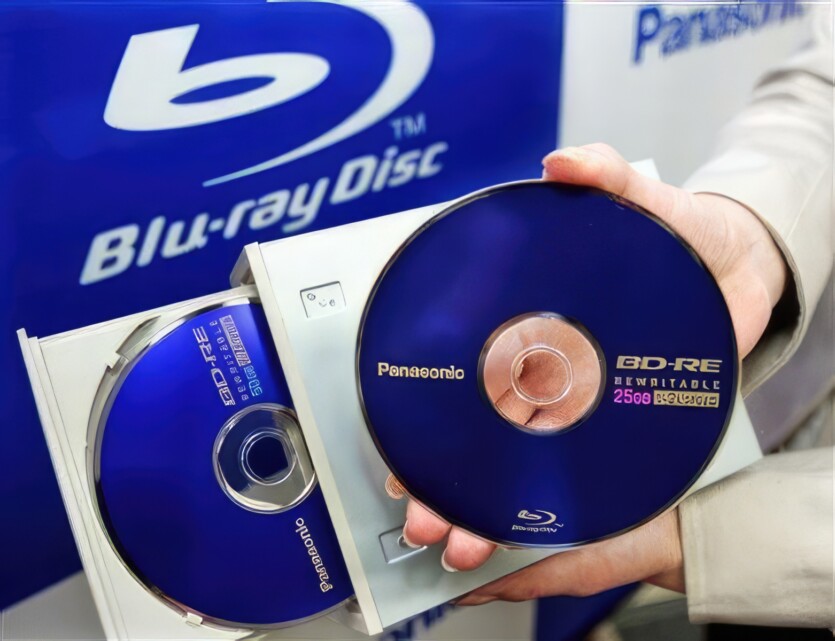
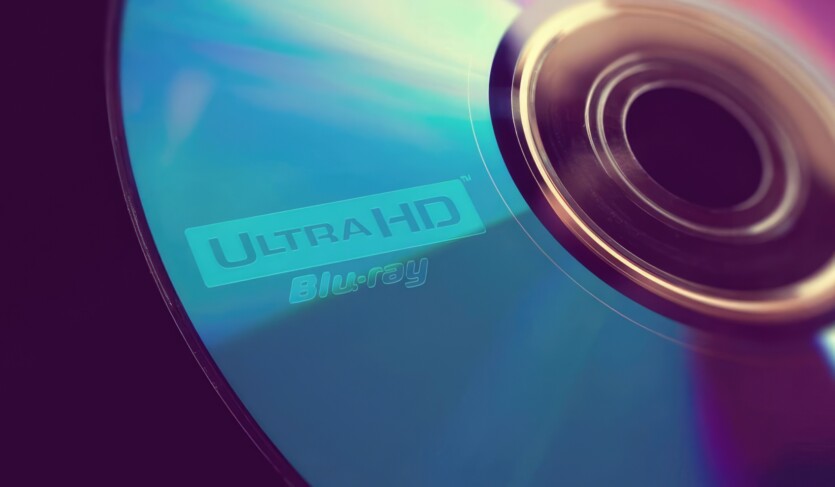
In addition to video games, the PlayStation 3 offered impressive multimedia capabilities that made it not only a game console but also a home entertainment center. As with the PS2, the new console was also bought to play optical discs.
As the first console with a built-in Blu-ray drive, the PS3 could play Blu-ray movies in Full HD (1080p), making it a popular choice among moviegoers. This was not something the Xbox 360 could boast of, and owners of top-of-the-line PCs at the time were happy to have a DVD drive with RW support rather than an outdated CD from the 90s.
The PS3 also supported DVD playback, so users could enjoy their classic DVD movie and music collection. The console also offered an upscaling feature (everything new is well forgotten old) that improved the picture quality of standard DVDs.
In addition, the Sony PS3 could play standard audio CDs, which were a must-have for every car driver in the 2000s, and supported popular digital audio formats such as MP3, AAC, and WMA.
Users could store music on the console’s hard drive or play files from a USB flash drive or external hard drive, turning the PS3 into a full-fledged music center. Owners could also expand the internal storage by replacing the HDD with a larger one. The PS3 could also view files from network sources, including DLNA servers!
Users were able to view photos in a slideshow with various visual effects and settings, as well as enlarge images and organize them into photo albums.
The set-top box supported a variety of video formats, including MP4, AVI, MPEG, DivX and Xvid, allowing you to play large, ultra-high-bitrate videos from HDD or Blu-ray. Later software updates added support for Netflix, YouTube, Hulu, and Amazon Prime Video, allowing the PS3 to stream video content from the Internet, expanding its capabilities as a multimedia center.
The possibilities of the best home computer (and no, not those in ATX cases) did not end there: The PS3 had a built-in web browser that supported HTML, JavaScript and Flashallowing you to browse the web, watch videos, and listen to music online. Although the browser did not support all modern standards and was somewhat limited, it was still useful for viewing content from the Internet.
Thanks to the Remote Play feature, PS3 owners could broadcast images on the PlayStation Portable (PSP) and later the PlayStation Vita. This allowed access to music, videos, and some PS3 games from portable devices via a local network or the Internet. This technology is still relevant today with the PlayStation Portal for PS5.
In addition, we have a wireless gamepad for convenient control from the comfort of your couch. These multimedia capabilities and the level of their implementation were simply unattainable for any PCs released in 2006, 2009, 2012 or 2014. No other device has ever offered such convenience and comfort when working with multimedia.
PlayStation 3 versions
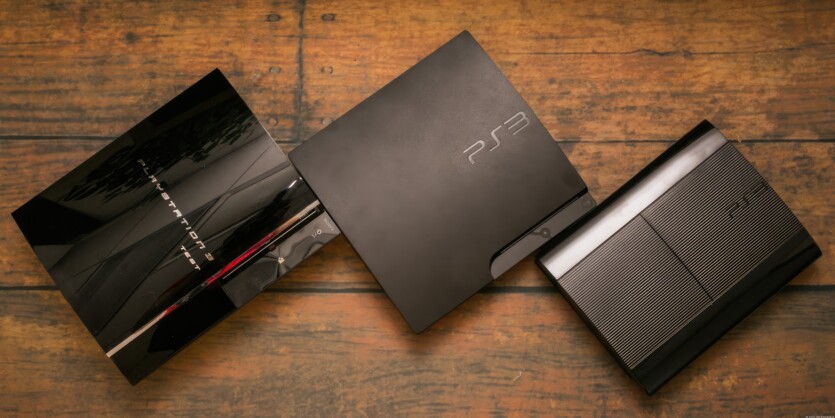
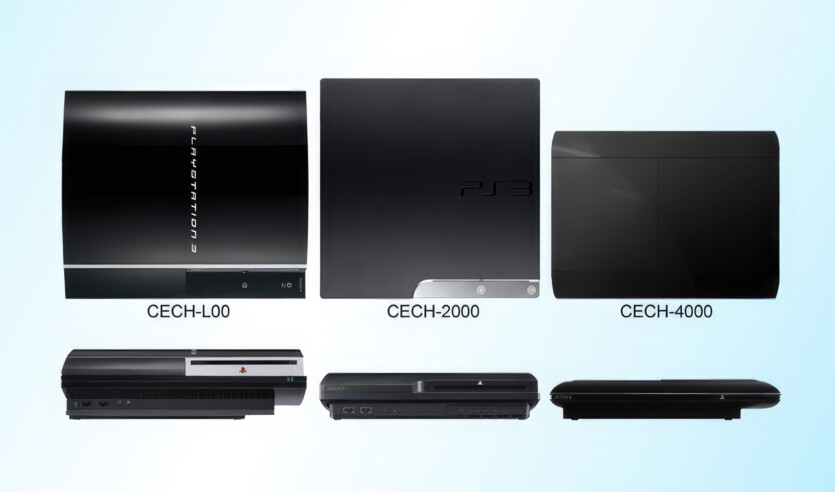
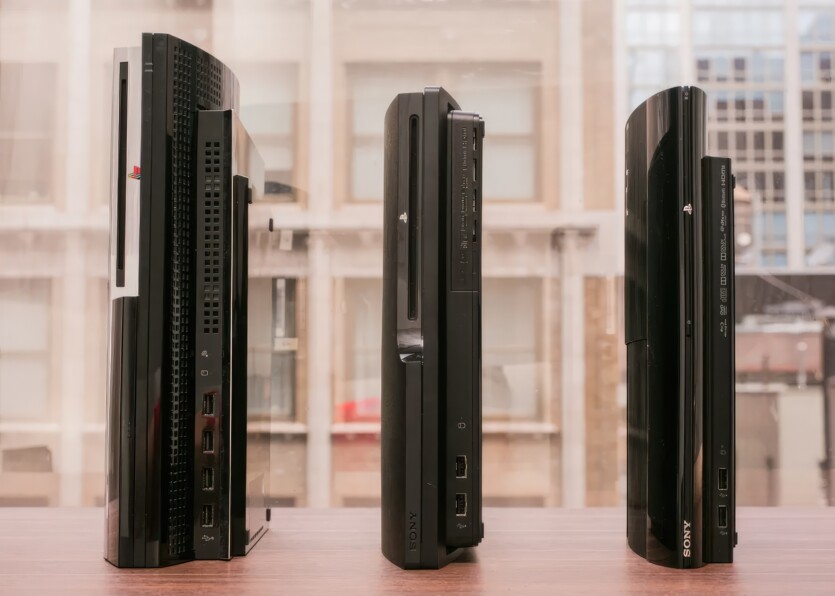
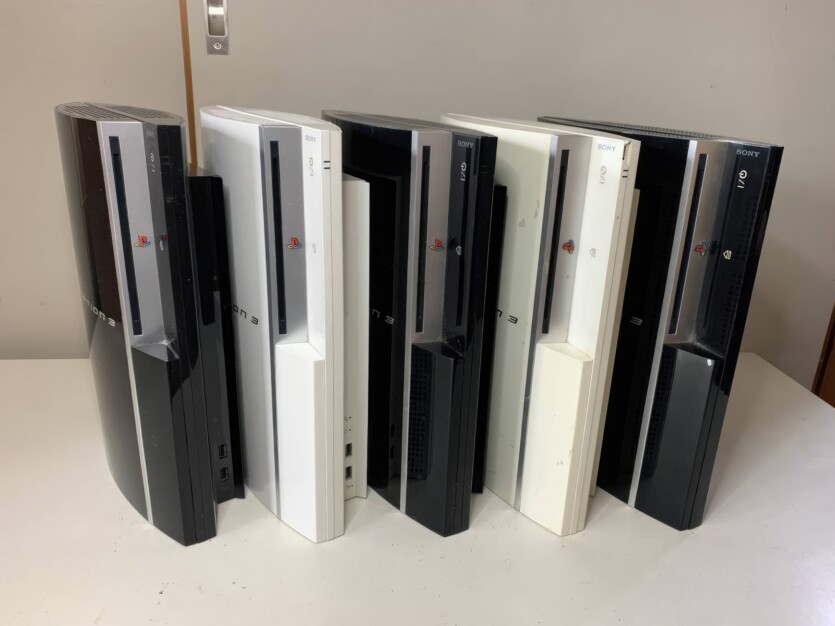
During the life cycle of the PS3, Sony has released three main versions of the console: Original (Fat), Slim, and Super Slim. The original version of the console included a 60 GB hard drive and also supported backward compatibility with PlayStation 2 games, although this feature was later removed, which was a big disappointment.
The Slim model came out three years later, with a more compact design and lower power consumption. The latest version of the Super Slim, released in 2012, was even lighter, had a storage capacity of up to 500 GB and a new drive. Even six years after its release, it was still a very relevant console that people chose to buy despite having gaming PCs.
PS3 Fat (original model)
- Issue: 2006.
- Capacity HDD: 20 GB, 40 GB, 60 GB, 80 GB, and later 160 GB.
The first PS3 models were large (relative to their predecessors), had a distinctive curved design, and were backwards compatible with PS2 games. However, backward compatibility was limited to only some models, including the 20 GB and 60 GB, which had additional chips for PS2 compatibility. Later 40 GB and 80 GB Fat models were released without PS2 game support to reduce production costs.
PS3 Slim
- Issue: September 2009.
- Capacity HDD: 120 GB, 160 GB, 250 GB and 320 GB.
The Slim model was 33% smaller and 36% lighter than the original. It had lower power consumption and was not backwards compatible with the PS2. This version also had a nicer design and a matte finish that was less prone to fingerprints, but that was about it.
PS3 Super Slim
- Issue: September 2012.
- Capacity HDD: 250 GB and 500 GB, as well as a model with 12 GB of flash memory (in the European market).
The Super Slim was even more compact and lightweight than the Slim, with a new design featuring a sliding disk drive cover and a glossy finish. This version of the PS3 was optimized to reduce costs while maintaining the same specifications as the Slim. Despite being six years old, it sold like hotcakes.
There were also special editions of the PS3 released in partnership with certain games, such as Final Fantasy XIII, Metal Gear Solid 4, God of War III, and Gran Turismo 5. These consoles often had a unique case design and were released in limited editions. Since then, the fashion for «game + console» sets, as well as themed cases, has been in vogue.
Queues as if for Apple
When we hear in the news about kilometer-long lines for electronics, we immediately think of Apple iPhone (the world’s most popular smartphone for 17 years in a row), but in fact, even before the advent of the apple phone, people were camping out overnight and booking a place in line for a Sony game console.
The launch of the PlayStation 3 in 2006 caused an incredible stir, and a few days before the console’s release, fans were standing in long lines, despite the high prices: $499 for the 20 GB version and $599 for the 60 GB version, which was costly at the time. Taking into account inflation, it’s like a PS5 Pro in 2024.
But even the high price did not deter buyers — in the United States, customers were lining up in the evening, sometimes even arguing and fighting due to the limited number of consoles available for purchase. In Japan, the launch of the PS3 also attracted a lot of attention, although a significant portion of the lines were occupied by resellers who planned to resell the console at a profit.
In Europe, Sony even organized special promotions to stimulate interest, for example, buyers of PS3 at the Virgin Megastore in London received a free 46-inch HDTV. However, the European reaction was much more restrained due to the high price of the console (599 euros), and the excitement was less than in the US or Japan.
There is no need to talk about Ukraine — in 2006-2007, only a select few Ukrainians could get a PS3. Back then, at best, a domestic gamer could have a PS2, Sega, or Nintendo 16-bit, and at worst, a fake Dendy 8-bit or a family home computer with a fancy Intel Pentium IV. It would be another half decade before PCs could finally compete with the PS3, and they were losing, as evidenced by the console’s sales many years after its release.
In general, the excitement and shortage of PS3s prompted resellers to buy up consoles en masse and resell them at online auctions at inflated prices (a tactic that still works today), especially in the first days after launch. However, over time, as the PS3 became more affordable and production increased, demand normalized, and Sony made the device more affordable by releasing new models and lowering prices.
Sony was selling the PS3 at a loss because the cost of components was higher than the official price, but it knew it would recoup the price on video game commissions and online services. The tactic worked because there was no better computer for $500 at the time, and there was no better computer for many years afterward. What’s more, even for $1500-2000 (Intel Core 2 Quad processor cost $1000 at release), the PC were weak compared to the PlayStation 3, which was physically unable to reproduce games like The Last of Us or GTA V with the same level of smoothness, stability, and realistic physics.
The aesthetics of hand-built computers and the design of the PS3:

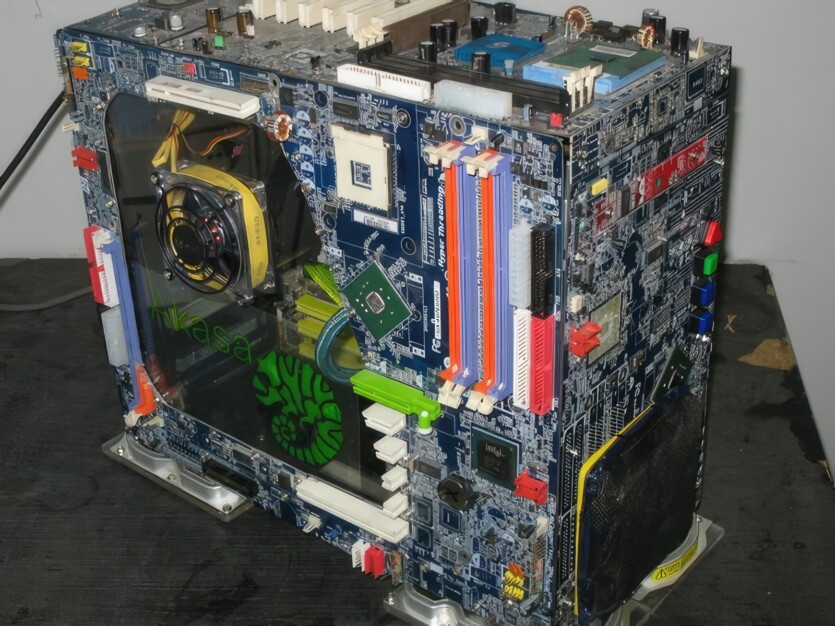
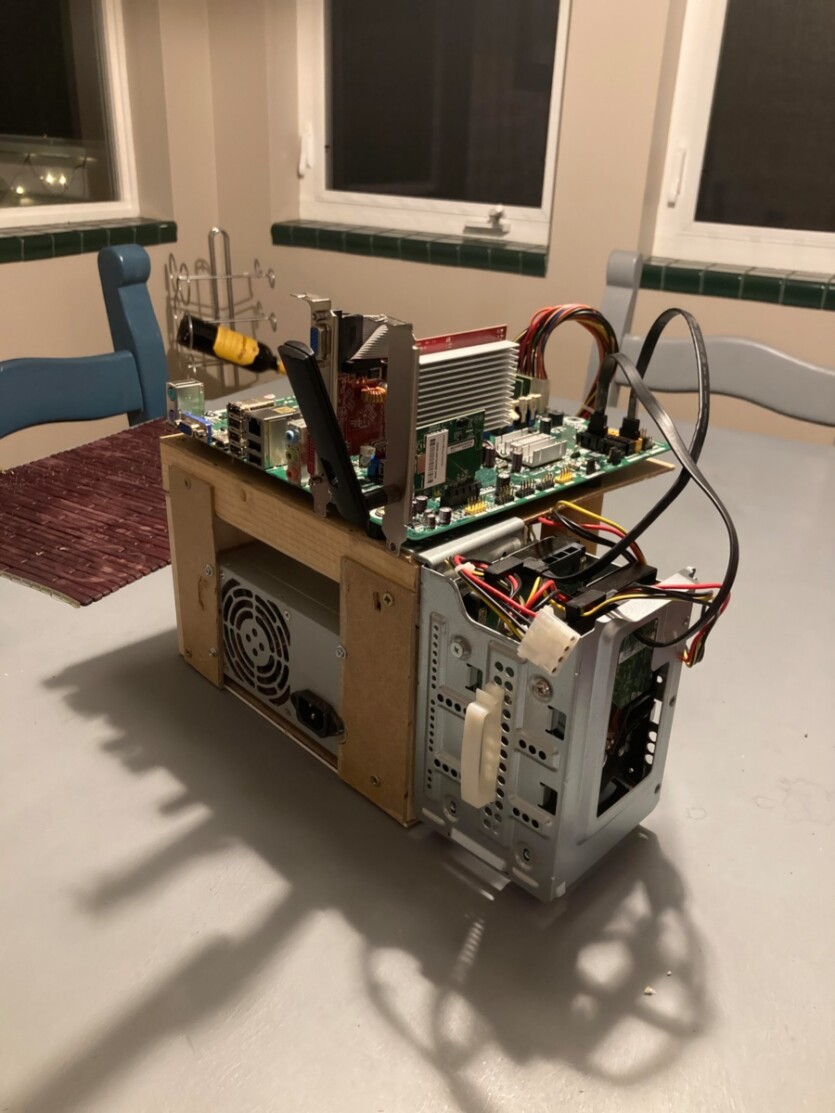


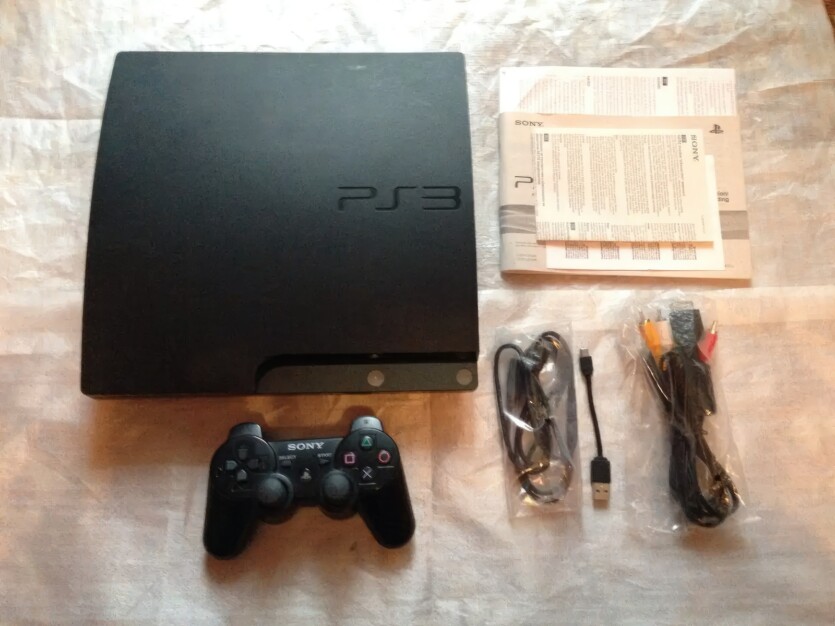
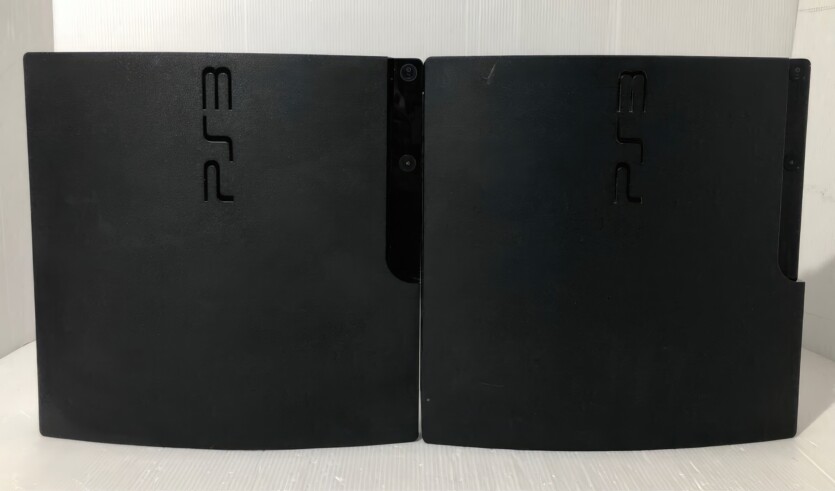
In addition, we have the best multimedia capabilities, low-power consumption, and high-quality wireless gamepads. No wonder the success of the PS3 was inevitable, natural and well-deserved. On the other hand, although PCs were not at all competitors to the PlayStation 3, a large part of the audience was still taken by Microsoft’s Xbox 360, and the «casuals» were lured away by the Nintendo Wii.
Conclusions
The Sony PlayStation 3 has become a landmark console in the history of video games, thanks to its powerful specifications, excellent multimedia and innovations in processor architecture, which was the peak of the POWER CPU evolution. The idea of parallel computing worked, and this allowed us to fully realize the capabilities of a productive processor.
Despite the high starting price, the launch of the PS3 aroused great interest and excitement, especially in the United States and Japan. The first versions sold out instantly, leading to queues and even conflicts among buyers. Some fans waited in lines for days to become one of the first owners of the new console, while resellers tried to maximize their profits by reselling PS3s at inflated prices at auctions.
Not a purely gaming computer, but the most convenient computer for everyone: the use of Blu-ray and extensive multimedia capabilities turned the console into a universal entertainment device used not only for gaming but also for watching movies, listening to music and viewing photos, which strengthened its position in the console market.
While in modern realities, a gaming computer is a good competitor to game consoles, buying a PC for gaming in the PS3 era was complete madness and ignorance of all the console’s capabilities. It is not surprising that after the PlayStation 3, AAA games are no longer made on PCs, not at all, but only ported to game consoles after initial development.
Sony PlayStation 3 was the best in all respects (including multimedia) and trampled into the ground the most powerful flagship solutions with Intel Core 2 Duo, 2 Quad and AMD Phenom X2, X3, X4, which did not have good software support (games used a single core), quickly became outdated and were inadequately expensive.
Sony PlayStation is definitely the best gaming console in terms of technology in the industry, although it failed to surpass its predecessor in terms of popularity. The PS3 has become a symbol of technological progress and Sony’s great ambitions in the gaming industry. It was a challenging but successful path of developing a complex device that ended with more than 87 million units sold, global fame, and another victory over PC.
We recommend that you familiarize yourself with our materials about other Sony consoles:





Spelling error report
The following text will be sent to our editors: